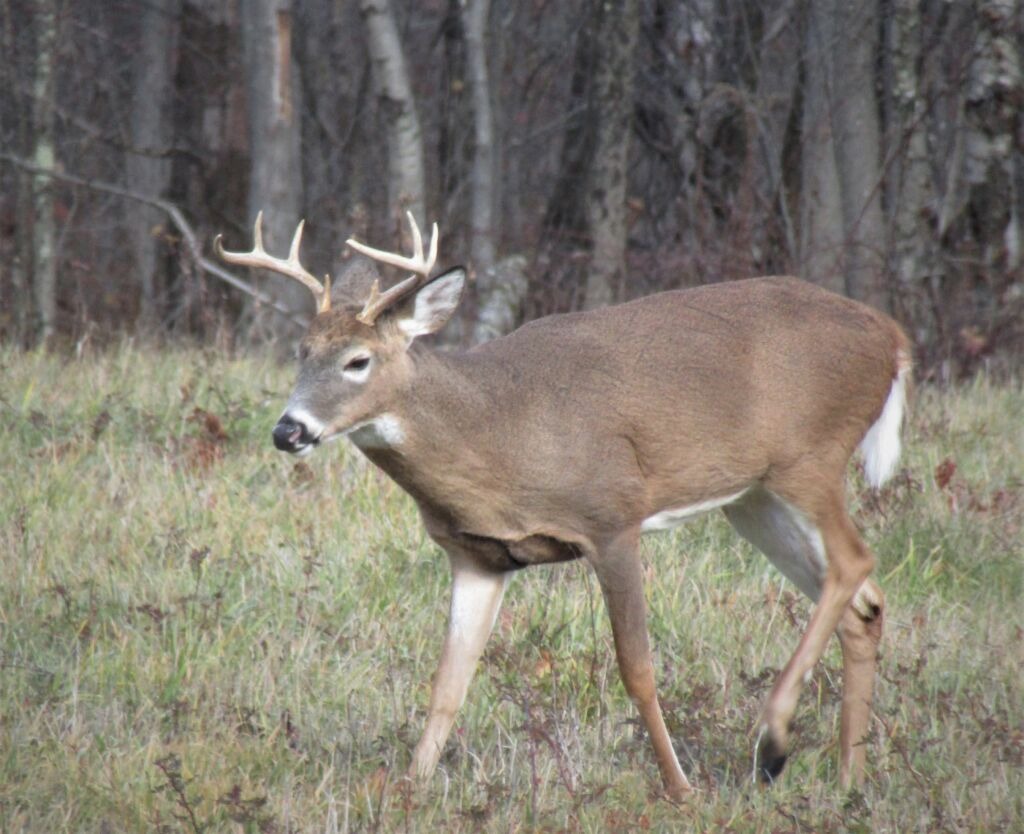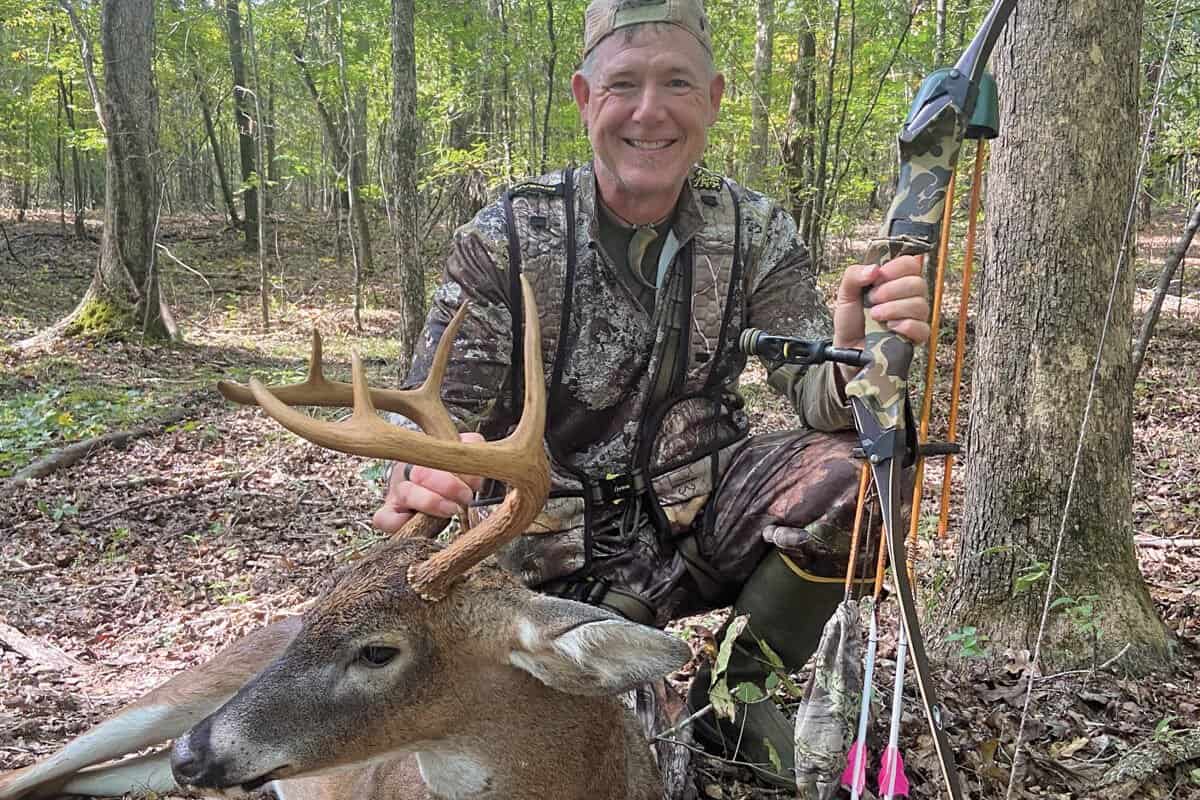Hitting a deer at 30 mph can result in significant vehicle damage and wildlife casualties. Drivers may experience shock, injuries, and potential legal implications.
Colliding with a deer, even at a modest speed of 30 mph, is a serious concern for both drivers and the affected wildlife populations. Each year, thousands of accidents involving deer cause damage to vehicles, injure passengers, and lead to the unfortunate demise of the deer.
Drivers must remain vigilant, especially in areas with high deer populations or during peak activity periods like dusk and dawn. Such collisions not only impact the ecosystem but also lead to costly insurance claims and repairs. Engaging in safe driving practices and understanding how to react if a deer is spotted on the road are essential for reducing the risks associated with these types of accidents.
Contents
The Risk Of Deer Collisions
Hitting a deer at 30 mph can turn a peaceful drive into a traumatic event. Both drivers and deer face dangers as cars and wildlife cross paths. Understanding the risks is key to prevention. Each year, deer collisions cause injuries, vehicle damage, and high costs. Awareness and caution can minimize these incidents.
Peak Seasons For Deer Activity
Deer are most active during fall and spring. The onset of cold weather and mating season triggers abundant movement. In fall, specifically from October to December, deer search for mates, leading to an increase in activity. This period coincides with harvesting seasons and reduced daylight hours, escalating the risk of collisions.
- October to December: High-risk months
- Dawn and dusk: Peak hours for deer movement
- Mating and migration influence activity levels
Geographic Areas Prone To Incidents
Certain regions report higher incidents of deer collisions. The American Northeast and Midwest are particularly high-risk areas due to dense deer populations and forest proximity to roads. Here’s a breakdown of these regions:
| Region | Factors Contributing to Collisions |
|---|---|
| Northeast |
|
| Midwest |
|
Communities near forests and farmland should exercise extra caution. Weather conditions also influence deer behavior, often driving them to cross roads during or after storms.
Survival Tips For Driving In Deer-prone Areas
Traveling along winding roads surrounded by forest can be picturesque but poses a unique danger – deer. Especially during dawn and dusk, the risk of striking a deer is greater. Understanding and practicing survival tips for driving in deer-prone areas is crucial. Let’s learn how to stay safe and avoid accidents.
Preventive Measures Before Hitting The Road
Embarking on a journey where deer are frequent visitors requires preparation. Below are effective strategies to minimize risk:
- Scan for Deer Crossing Signs: Remain alert and slow down in these zones.
- Maintain Your Vehicle: Ensure your brakes and headlights are functioning properly.
- Deer Deterrent Devices: Consider installing devices to scare away deer.
- Stay Within Speed Limits: A lower speed gives more reaction time.
Split-second Decisions When A Deer Appears
Surviving a deer encounter on the road often hinges on split-second decisions:
- Do Not Swerve: Maintain your lane to avoid a more dangerous collision.
- Apply Brakes Firmly: Reduce your speed as much as possible without losing control.
- Sound Your Horn: A long blast can frighten the deer away from the road.
- Use High Beams: When no traffic is present, high beams can help spot deer earlier.
The Immediate Aftermath Of A Deer Collision
The Immediate Aftermath of a Deer Collision can leave any driver shaken. The sudden impact at 30 mph is not just a jolt to the system but it also requires immediate and smart response to ensure safety. Understanding what to do next is vital. Immediate actions can prevent further accidents and ensure the scene is handled correctly.
Safety Procedures Post-impact
Once a collision with a deer occurs, the priority is safety. Here is what to do next:
- Move the vehicle to a safe area if possible; off to the side of the road.
- Turn on hazard lights to alert other drivers of your presence.
- Check for injuries. Attend to any passengers and yourself for any immediate medical needs.
- Do not approach the deer. A wounded animal can be unpredictable and dangerous.
- Call for help if necessary, especially if there are injuries or the vehicle cannot be driven.
Assessing The Scene And Reporting The Accident
Assessment and reporting should be thorough:
- Assess the damage to your vehicle once you and your passengers are safe.
- Take photos of your car, the deer if safely possible, and the surrounding area.
- Look for witnesses who might have seen the collision.
- Call local law enforcement to report the incident. They can file an official report for insurance purposes.
- Exchange information with any witnesses, jotting down their contact details.
Remember to stay calm and focused throughout. Quick thinking ensures everyone’s safety and a properly managed accident scene.

Credit: theupstater.com
Understanding Vehicle Damage And Repair Costs
Striking a deer at 30 mph can seem minor. It’s not. Even at this speed, a deer collision can cause major vehicle damage. Understanding the extent of damage and the costs related to repairs is crucial.
Common Types Of Damage From Deer Collisions
Deer impacts at 30 mph can lead to various types of vehicle damage. Here’s a breakdown:
- Bodywork: Dents and scratches on the car’s exterior.
- Front-End: Crushing of the hood, bumper, and grille.
- Lights: Broken headlights or taillights.
- Windshield: Cracks or shattering upon impact.
- Radiator: Damage causing coolant leaks.
- Alignment: Disruption of the car’s suspension or wheels.
Estimating The Repair Costs For Different Scenarios
Knowing potential costs for repairs helps set expectations. Let’s explore some scenarios:
| Damage Type | Minor Damage Cost | Major Damage Cost |
|---|---|---|
| Bodywork | $250 – $600 | $1500 – $3000 |
| Front End | $300 – $800 | $2000 – $4000 |
| Lights | $150 – $400 | $500 – $1200 |
| Windshield | $200 – $600 | $500 – $1000 |
| Radiator | $200 – $500 | $600 – $1200 |
| Alignment | $100 – $300 | $500 – $1500 |
Gather quotes from auto shops immediately after an accident. This ensures accurate repair costs and avoids unexpected expenses.
Encounters with deer on the road can happen without warning, leaving you with a damaged vehicle and the need for an insurance claim. Knowing how to navigate the process ensures you get the necessary coverage with minimal stress. Let’s break down the steps to successfully manage insurance claims after an unexpected collision with a deer.
Filing An Insurance Claim
Act promptly after the accident to file your insurance claim.
- Collect evidence at the scene.
- Take photos of your vehicle and the accident location.
- Note the time and conditions of the incident.
Once safe, contact your insurance provider. Provide all details and evidence.
Keep copies of the report and claim number. This helps you track your case.
What To Expect From Your Insurance Company
After filing the claim, your insurance company will assess the damage.
- An adjuster will inspect your vehicle.
- You will get an estimate for repairs.
- Discuss coverage based on your policy.
Comprehensive coverage typically includes deer collisions. Liability-only policies may not cover these accidents.
Understand your deductible and policy limits prior to agreeing to repair costs. Ask questions to clarify any uncertainties.
Credit: www.quora.com
Prevention And Preparation To Minimize Future Risks
Driving through wooded areas poses a risk of wildlife encounters. Deer often cross roads unexpectedly, especially at dusk and dawn. Collisions with deer can be dangerous. Hitting a deer at 30 mph can cause considerable vehicle damage and personal injury. Effective prevention and preparation strategies reduce these risks. Implement technology for detection and boost driver awareness to help.
Technological Solutions For Deer Detection
- Install deer whistles on your vehicle: They emit sounds to startle and alert deer from a distance.
- Use night vision systems: These reveal hidden wildlife with infrared light.
- Adopt collision avoidance systems: Some cars now come with sensors for animal detection.
- Upgrade to adaptive headlights: They enhance visibility around curves where deer may hide.
Enhancing Driver Awareness And Response
- Follow speed limits: Slower speeds give more reaction time.
- Stay vigilant during peak times: Deers are most active at dawn and dusk.
- Scan both sides of the road: Watch for deer waiting to cross.
- Practice safe driving habits: Keep a safe distance from other vehicles.
- Attend defensive driving courses: Learn best practices to avoid wildlife collisions.
Credit: www.quora.com
Frequently Asked Questions Of Hitting A Deer At 30 Mph
What Happens When You Hit A Deer?
When a vehicle collides with a deer, it can result in significant damage to the car and potential injuries to the passengers. The impact at 30 mph can cause dents, shattered glass, and deployed airbags. It’s crucial to assess safety and report the accident.
How To Avoid Hitting Deer While Driving?
To avoid collisions with deer, remain vigilant during dawn and dusk when deer are most active. Use high beams when appropriate for better visibility. Slow down in areas known to have high deer populations and follow road signs that indicate wildlife crossings.
Who To Call After Hitting A Deer?
After striking a deer, pull over to a safe location and call local law enforcement or state troopers. They will document the incident and provide guidance on next steps, including how to handle the animal if it’s on the road and dealing with insurance claims.
Will Insurance Cover Hitting A Deer At 30 Mph?
Most comprehensive car insurance policies cover collisions with animals, including hitting a deer. After documenting the accident and ensuring everyone’s safety, contact your insurance provider to file a claim and understand your coverage for vehicle repairs and medical expenses.
Conclusion
Navigating the aftermath of a deer collision can be daunting. Remember, safety is paramount; stay calm and assess the situation. Contact authorities, document the incident, and consult your insurance. Your preparedness can mitigate the risks of driving in deer-populated areas.
Drive attentively and stay protected on the roads.


